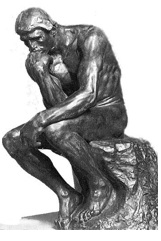 Smith and Snell, in chp 6 of their Souls in Transition: The Religious and Spiritual Lives of Emerging Adults
Smith and Snell, in chp 6 of their Souls in Transition: The Religious and Spiritual Lives of Emerging Adults map six major religious “types” in emerging adults, and this can be seen as a broad-brushed sketch of what emerging adults in American culture are like when it comes to religion:
1. Committed traditionalists (15%)
2. Selective adherents (30%)
3. Spiritually open (15%)
4. Religiously indifferent (25%)
5. Religiously disconnected (5%)
6. Irreligious (10%)
Next chp sketches what they saw change or stay in the same when interviewing the same persons they interviewed for the previous book on teenagers faith.
The 8th chp, with Kyle Longest, sketches — with all kinds of stats and charts and details — religious trajectories. I can’t possibly do justice to all the details so instead I will draw on one of the major results: there’s much more continuity between a teenager’s faith and an emerging adult’s faith than you might expect. The religious commitments of the teenage years, and one might say the intensity and genuineness and depth of those commitments, are what shapes what happens in the emerging adult years.
They draw attention to the following as central commitments: personal prayer, highly religious parents, the importance of faith and personal religious experiences.
College is not as erosive to faith as it once was.

